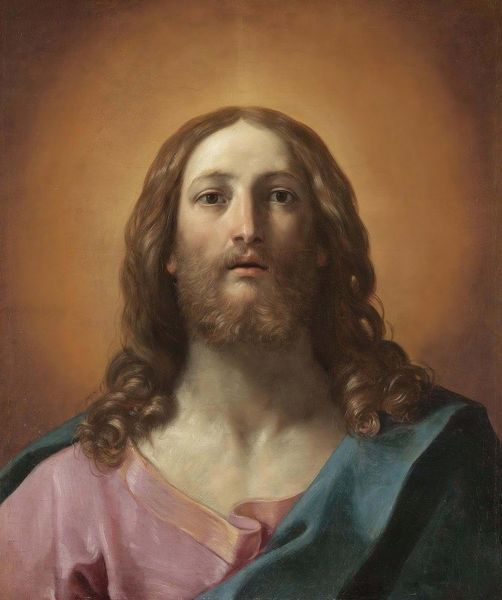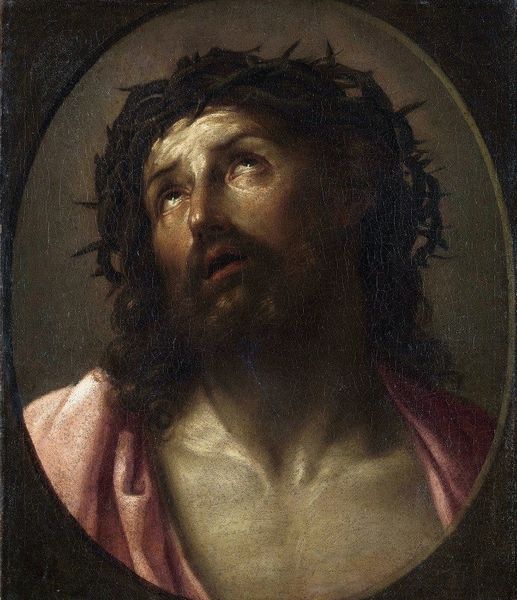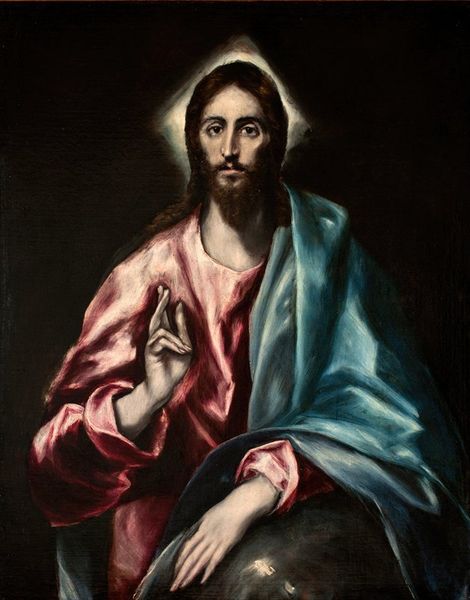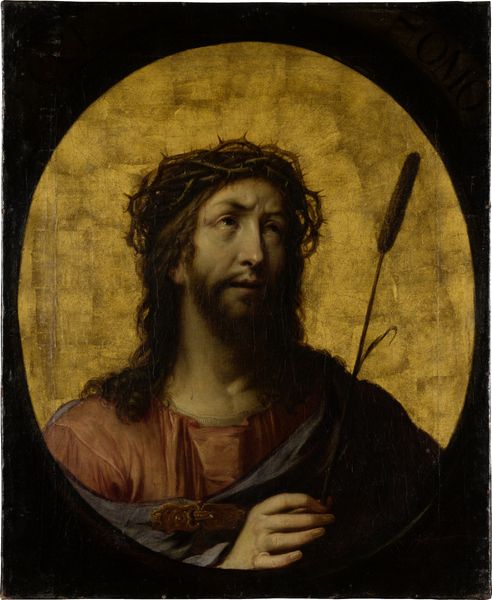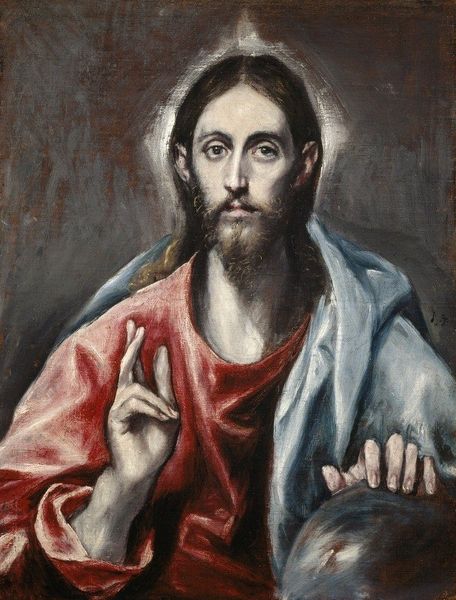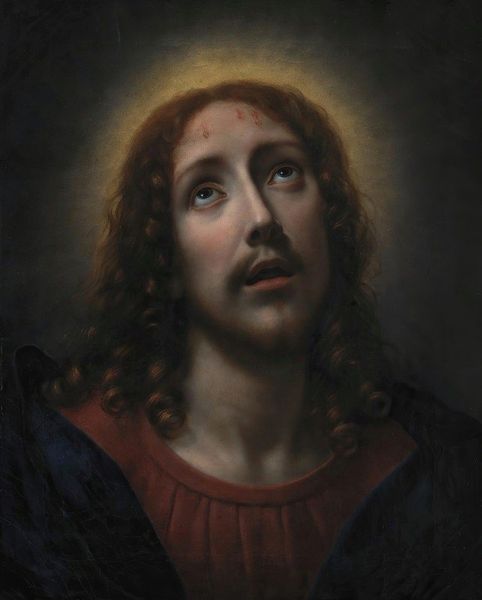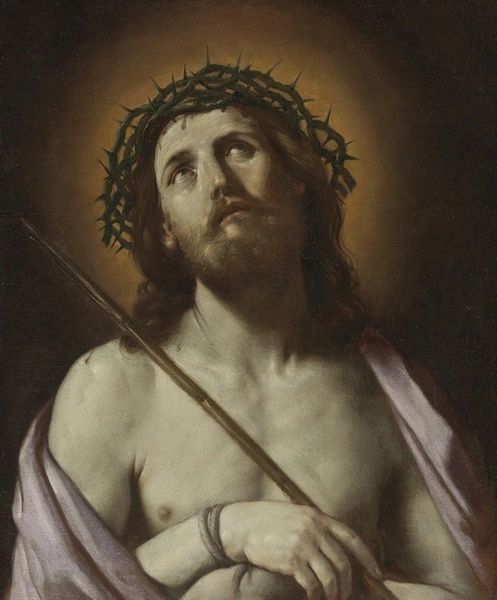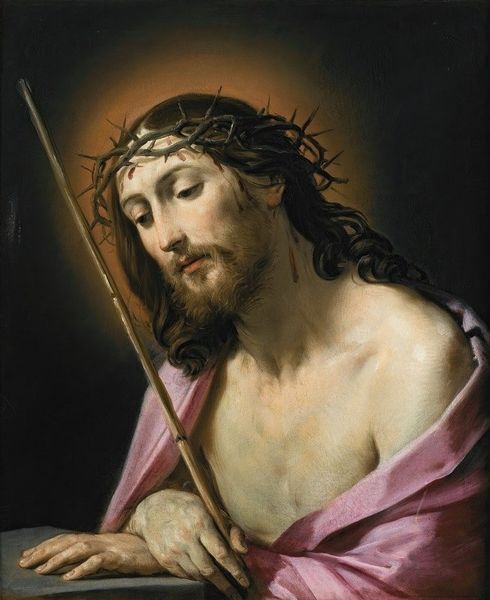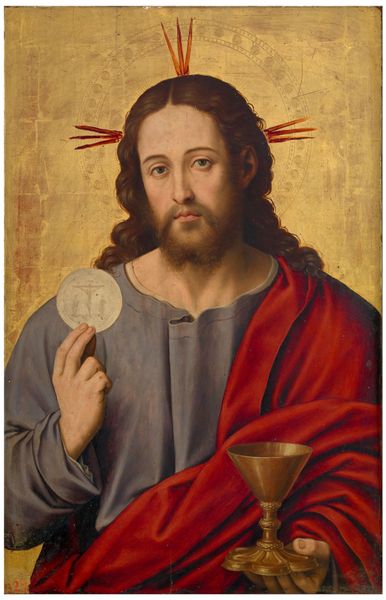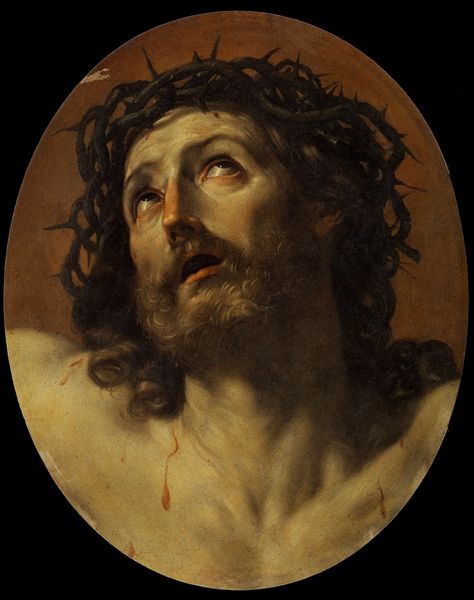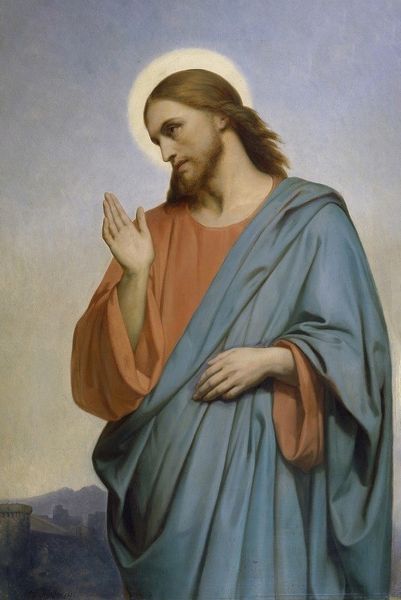
painting, oil-paint
#
portrait
#
allegory
#
baroque
#
painting
#
oil-paint
#
figuration
#
chiaroscuro
#
history-painting
#
italian-renaissance
#
realism
Copyright: Public Domain: Artvee
Editor: Here we have Carlo Dolci's "Ecce Homo," an oil painting that certainly captures a somber mood. I'm struck by the intense contrast between light and shadow and the overall devotional quality. What stands out to you about this work? Curator: Well, let’s think about the moment Dolci is depicting and how this image functions culturally. The "Ecce Homo"—"Behold the Man"—presents Jesus to the crowd before his crucifixion. Now, think about the Catholic Church at the time, what would be the impact of these emotionally charged devotional images? Editor: It seems intended to evoke a strong emotional response. Is it about encouraging repentance? Curator: In part. These images certainly reinforced religious doctrine. Dolci was hugely successful, partly because his highly finished, polished style and overt sentimentality resonated with Counter-Reformation ideals of eliciting piety and obedience through emotional appeal. Notice the almost theatrical lighting and the very detailed rendering. But I would encourage you to also consider the patron that commissioned these types of devotional artworks and the underlying ideology they sought to promote and consolidate. Who was this painting created *for*, and how was that shaped the composition and narrative? Editor: I never thought about the patron so deeply, but it does change the intention behind this artwork and it helps better explain the almost melodramatic portrayal. Thanks for helping me consider that social and institutional context. Curator: Absolutely. It reminds us that even the most seemingly personal or devotional images are often shaped by wider social, cultural, and political forces. Always consider who is benefitting from the creation and consumption of these artworks.
Comments
No comments
Be the first to comment and join the conversation on the ultimate creative platform.
